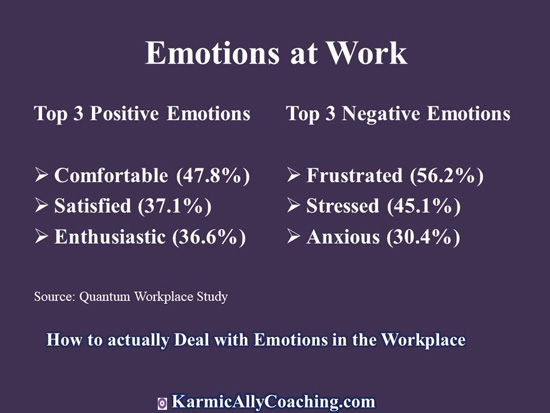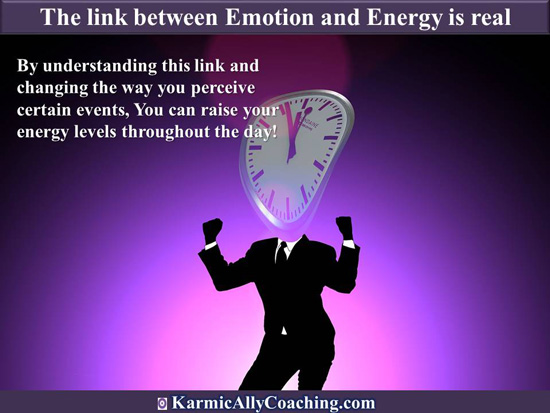This post has already been read 246 times!

We’re told professionalism means not allowing your feelings to show at work. In fact, we’re told to keep our work problems and home problems totally separate.
As a result, a lot of people feel like they can’t bring their feelings with them to work situations. That any demonstration of feeling can go against them and their career prospects.
Here’s the reality: Feelings are inevitable at work. Just like any situation in life, you’re going to experience feelings and emotions in your work environment. Your level of self-awareness will determine how you manage those feelings and emotions.
So, how are you handling these feelings and emotions?
Let’s take an example.
Uncontrolled anger can cost you your job
Let’s face it. People are going to get under your skin at work. In most cases, you are not in charge of picking the people who you work with.
That means you will find plenty of incompatible people in the workplace. But blowing a gasket when someone makes you reach your boiling point could cost you your job.
The story that I shared in my post on Composure and Anger Management needs to be highlighted again.
In short, this is what happened with a client CFO who was known to have a short temper. Yet top management ignored it because he was good at his work, and they needed him to steer a major acquisition that had been made.
The work was high pressure. His outbursts were ignored until it reached the point of assaulting another director in front of the staff.
It became apparent to the company that he couldn’t handle pressure well. Limits were crossed and dismissal was the only option.
This is an extreme example but there are some points to note if you feel someone is getting under your skin too much.
A good starting point is self-awareness and understanding whether your anger is healthy or unhealthy.
Then you need to find ways to diffuse your anger.
You will not only be the bigger person in doing so; you’ll show you can handle pressure as well, which is an important aspect of business.
Remember the advice to count to ten whenever you are angry? This is good advice as it gives you the breather you need before responding or reacting.
Also, try to walk away from the person or people who are irritating you. You have a greater chance of not saying something you will later regret.
When you are trying to compose yourself, try to put yourself in the other person’s shoes. Perhaps there is something you did that is making them react in a hostile manner. Playback in your head, any interactions you had with that person and see if you did something to upset them.
Keep in mind that you don’t have to cave into people. If they are in the wrong, you’ll want to put yourself in a position of strength but do it only when you are no longer angry. Businesses appreciate employees who can defuse altercations.
As a last resort, you may need to approach your manager regarding the behaviors of some of your coworkers. If so, present both sides of the situation as best you can. Your manager will see that you are not trying to manipulate him or her into only seeing your side of the story.
Managers should also keep anger in check.
While it’s common for managers to lay into their employees, this behavior can backfire on them. Good managers need to handle situations in a firm but fair manner, without losing control of their emotions.
Otherwise, employees may seek alternative employment. Upper management may start to notice managers who are overly aggressive with their employees and take disciplinary actions.
Find ways to blow off steam. People spend many hours each week working together. There are bound to be heated situations. Keeping your composure, while not always easy, is going to go a long way in helping you from losing your job.
The emotions we experience at work
That was an extreme example of how emotions at work can backfire, but the fact is, we experience emotions at work.
In a research study done by Quantum Workplace, it was noted that employees experienced positive, negative and other complex emotions.
Positive emotions aren’t limited to only optimistic and hopeful feelings. Examples of positive emotions could include calm, comfortable, energetic, enthusiastic, excited, happy, joyful, peaceful, relaxed, and satisfied.
Examples of negative emotions included annoyed, anxious, bored, disinterested, dissatisfied, frustrated, gloomy, miserable, sad, stressed, tired, uncomfortable, unhappy, upset, and worried.

Negative moral emotions at work
The research also revealed more complex emotions—especially moral emotions.
Morals are the principles that differentiate between good and bad behavior, and they vary from person to person. Emotions that are influenced by our morals are called moral emotions. They include emotions like guilt, regret, and shame—and they carry much more weight than our primary emotions.
When taking average rank and top 3 percentage into account, employees believe the most negative moral emotions are:
- Humiliation
- Disgust
- Resentment
When it comes to negative emotions, you can’t always act on them, but you can embrace them and know when and how you can express them.
The first step is to understand yourself, your emotions and how they are impacting your behavior.
The Link between Emotion and Energy
Emotion and energy levels are intimately linked and understanding this connection is the key for many people who want to feel more awake and productive.
Here’s the science behind it.
The brain is essentially a large web of connected neurons which psychologists call the ‘connectome’. This connectome fires as we experience various things in the world or as we remember certain things and this then creates a variety of different subjective experiences for us.
At the same time though, our brain’s unconscious processes pay close attention to the nature of what we’re focused on and then produce neurotransmitters accordingly. If what you’re seeing is important, then your brain will produce things like dopamine which make us more motivated and help us to remember things better.
If what we’re seeing makes us scared and is at all associated with pain or bad things happening, we’ll produce norepinephrine (adrenaline) and become more focused and anxious.
These same things then in turn affect energy levels. When we’re alert and focused, this triggers changes in the sympathetic nervous system that increase our heart rate, our circulation and muscle tone all to make us more switched on and productive.
On the other hand, when something seems dull and uninteresting, our brain tells us we’re safe and able to go back to relaxing. Thus, it will produce GABA and melatonin which settle us down and make us sleep.

The Optimum Emotional State for Energy
There are numerous ways to manage our energy level, moods and productivity.
It’s important to manage those emotions that drain our energy levels. For example, boredom is absolutely fatal for energy levels. If you find your energy flagging one of the very best things you can possibly do is to switch up your environment or make the task you’re performing more interesting.
This will immediately tell your brain something interesting is going on and you’ll become more alert and awake again.
By understanding this link and changing the way you perceive certain events, you can raise your energy levels throughout the day!
How to deal with a Difficult Emotion using Mindfulness
Any conversation about emotions and energy would be incomplete without addressing the tool of mindfulness.
It is often prescribed by self-help gurus, doctors, writers and others as a tool anyone can use to improve their mental health.
Often this focuses on the long-term benefits of being more present and aware. At the same time though, mindfulness can also be used like a scalpel to deal with more acute problems.
Here we will look at how it can be leveraged for instance to tackle specific emotions as they arise.

Turning Towards Emotions
Normally when we experience negative emotions, we react either by trying to ‘fight them’ or by trying to suppress them. This can be described as almost ‘turning away’ from our emotions to try and deny them their power over us.
Unfortunately, this ultimately tends to result in our becoming more stressed or upset as the emotions bubble under the surface, or as we frustrate ourselves in trying to fight them.
Instead, mindfulness teaches us to turn towards our emotions. What this means, is that you are going to listen to the thoughts and feelings you’re experiencing and then simply acknowledge them.
Now you say ‘I am stressed’, ‘I am embarrassed’ or ‘I am upset’. Don’t be ashamed or upset that emotion exists but simply recognize that you are currently in that state.
People get upset sometimes. People get angry sometimes. But if you’re simply aware of your condition, then you can be aware that perhaps the thoughts you’re thinking aren’t completely objective.
What’s more, you should keep hold of the knowledge that emotions aren’t permanent. In other words, you’re feeling angry right now and as such your thoughts shouldn’t be taken too seriously. But in a few hours, you will likely feel better and then the world will seem like a brighter place again.
This creates a subtle but powerful shift.
No longer is the world a terrible place and thus you are upset, now you are upset and thus the world seems like a terrible place. The difference is that you now know that belief is not true.
What’s more, being aware and accepting of your emotions in this way will allow you to assess them in a kind of ‘debriefing’ and to look at what triggered them, how you dealt with them and what they made you think and do.
The more you break down and intellectualize your emotions, the more you will find you gain control over them.
3 specific strategies for managing your emotions at work
You’d have realized by now that emotions can’t be put in work and life silos. They exist as we do! I recommend starting with these three strategies!
Go Directly to the Source
If you need to have a difficult or uncomfortable conversation with somebody, your best bet is to cut to the chase. Go directly to the source and ask to have a mature discussion.
Office politics tend to confuse and exacerbate the situation, and it’s much better to involve yourself directly with someone rather than engage in gossip beforehand.
Because you’re in an office environment, you can always set up a meeting with your coworker or boss to sort things out. Otherwise, if you prefer a more casual setting, ask to get coffee or go for a walk outside of work.
Be Calm and Know Your Stance
Work environments can be stressful, but don’t let that disrupt your calm disposition. Going into a discussion with a sense of calm is really important. You may be taking a bold stance, and that’s perfectly fine. But you should make sure you stay calm about it and don’t get heated. Be confident that you know what you’re doing, and don’t let that change as the conversation begins to take form.
Remember Your “Why”
At the end of the day, you and all of your coworkers are there for the same reason. You’re not trying to disrupt the structure or success of the company, nor are you trying to stir up unnecessary drama. You all have a “why” or a reason to be there.
Your job is important to you, so try to remember this throughout your conversation. You’re trying to work through this and talk it out because you want to improve things, not make anything worse. Don’t forget that!
We’ve covered three big strategies for expressing your feelings at work, but you’re not limited to these three. Every situation is different, so take some time to think about yours and create your strategy accordingly. Good luck!





 I adhere to the Certified Coaches Alliance Code of Ethics and Standards. A copy is available on request.
I adhere to the Certified Coaches Alliance Code of Ethics and Standards. A copy is available on request.
 Let's Talk through the Connect Form:
Let's Talk through the Connect Form: